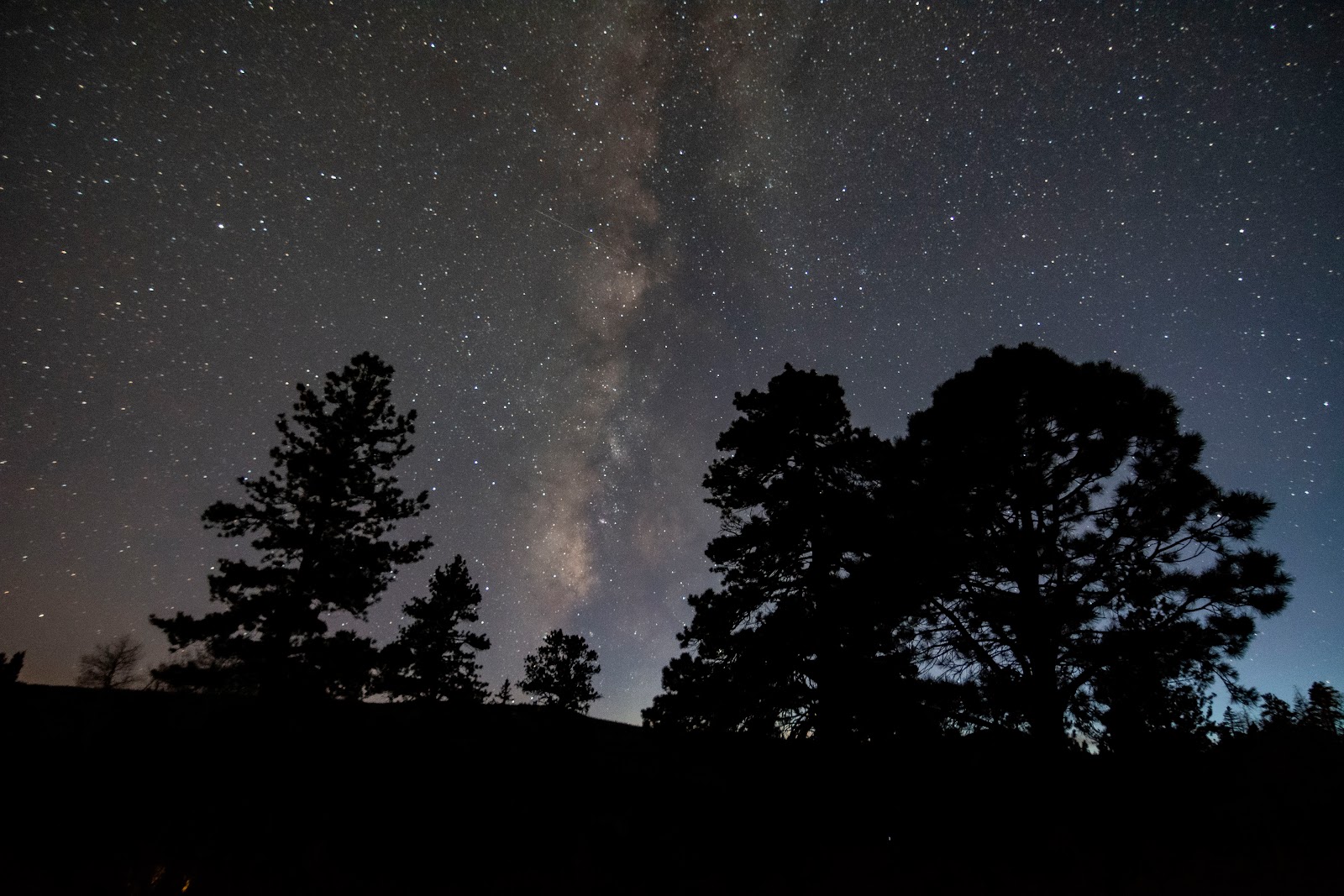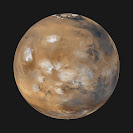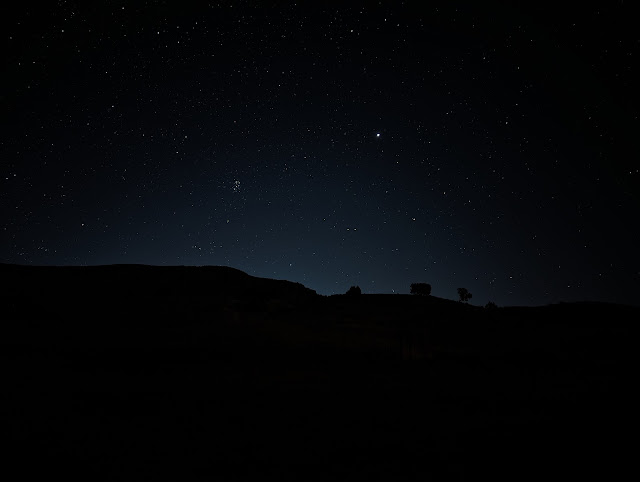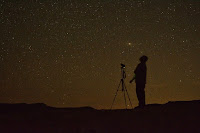Introduction
Rain, snow, and cold temperatures plagued northern Utah during the week of Thanksgiving. Throughout November, I watched Orion rise earlier and earlier and was often amazed by the size of this constellation. It's easier to tell how large it is when it first comes over the Rocky Mountains. Jupiter and Mars were close to Orion, with Jupiter's luminosity overtaking any other light point in the sky. Venus was easy to spot in the western sky during twilight, and Saturn was also easy to identify in the southeast as the sky darkened. The Sun remained active throughout the month with many sunspots, some quite large, visible with optical aid and appropriate eye protection. Unfortunately, the Northern Lights were not visible over Utah.
December brings the return of the Geminid and Ursid Meteor Showers. The Geminids typically produce the largest number of meteors per hour if the peak date coincides with the New Moon phase. That will not be the case this year, but they are still worth a look! Jupiter will reach opposition, making it the best time to view this giant planet in 2024. Mars and Saturn will remain great targets for telescopes if the weather permits. The Winter Solstice occurs this month, the favorite day for a co-worker as the daylight hours increase.
Beginning with the innermost planet, Mercury will be visible to interested observers in the morning sky after its inferior conjunction with the Sun on the 5th. As the month progresses, Mercury will gain altitude and brighten, making it easier to spot in the predawn sky. The best chance will come on the final morning of 2024 when Mercury can be found above the Rocky Mountains about an hour before sunrise. Mercury reaches its greatest western elongation on the 24th, with a thin crescent Moon joining this planet in the morning sky on the 28th.
Venus will again dominate the early evening sky. Shining brightly at magnitude -4.06 on the 1st and will continue to brighten as the remainder of the year races by. The Earth's evil twin will reach peak brightness on the 31st, shining at magnitude -4.25, easily outshining any natural object in the sky other than the Sun and Moon. A three-day-old Moon will join Venus in the evening sky on the 4th when the pair will be less than 2° apart. An observant astronomer will notice Saturn moving closer to Venus. The pair will experience a conjunction around the middle of January.
Mars will lag behind the other planets and be the last to rise in the evening sky. The Red Planet will be easy to spot due to its reddish glow and its shining at magnitude -0.5 at the start of the month. The views will only improve as the month progresses as Mars rises earlier and brightens to -1.2 by the end of the year. This most explored planet will reach opposition in January, making it visible all night for observers willing to brave the cold. M44, the Beehive Cluster, and one of my favorite open star clusters, can be found less than 3° below Mars as December begins. As the month continues, Mars will move further above M44, but will still be within 10 degrees. The Moon will pass less than a degree away from Mars in the early morning hours on the 18th.
Jupiter will reach opposition on the 7th, making this planet visible all night. This giant planet will climb high into the sky, making the best appearance for Northern Hemisphere observers in over a decade. Several Galilean Moon transits can be viewed throughout the month, so be sure to check out the Moons of Jupiter & Saturn app for Android or JupiterMoons for Apple devices. The Great Red Spot may also be seen at specific times depending on the observers' location, which the resources mentioned above can also be helpful. An observer will need a four-inch (100 mm) telescope or larger to view the transits and the Great Red Spot. I enjoy viewing all of the planets, but Jupiter is one of my favorites. I can still recall one of the first times I used my telescope and focused on Jupiter. The cloud bands could be easily seen, and I was lucky enough to see the Great Red Spot! During that same night, I witnessed one of the Galilean Moons transit the giant planet, leaving a shadow that was clearly visible through my scope. The Earth's own Moon will pass close to Jupiter on the 14th, the day before the Full Moon.
Saturn can be found above the southern horizon throughout December and will be visible until midnight during the first two weeks of the month and until about 11 PM by mid-month. Saturn's alignment with the Earth is approaching a point where its majestic rings will nearly disappear from our vantage point. Observers should soak up ringed views while they can! Of course, the rings will be visible again as the alignment of the Earth and Saturn change over time. A few of Saturn's moons can be seen transiting the planet during December. The Moons of Jupiter & Saturn app for Android or Saturn's Satellites web app can be used to find the locations of several of Saturn's moons. For those with Apple devices, JupiterMoons and SaturnMoons should offer similar results. The Earth's Moon will pass close by on the 8th. Those observing Saturn throughout the month will notice it moving closer to brilliant Venus in the evening sky. Their closest approach during December will come on the last day of the month, leading up to their conjunction in early January.
This month, Uranus will again be found close to M45, the Pleiades. An observer using a pair of binoculars or a telescope to view M45 would only have to shift their gaze to the lower right of this open star cluster to see the blue-green disk of Uranus. The Moon will pass close to this ice giant on the 12th.
Neptune is located a short distance to the left of Saturn and will follow its path through the night sky. Binoculars and a telescope will reveal the blue disk of the most distant planet. The Moon will pass between Saturn and Neptune on the 9th, with the Moon closer to Neptune than Saturn for those hunting for this elusive planet. As mentioned, Neptune follows the path of Saturn in the night sky and approaches Venus in the early evening sky. However, these two planets will not experience a conjunction until February.

The Geminids and Ursids
Earthlings can experience two prominent meteor showers this month if they are willing to spend some time outdoors in the likely below-freezing temperatures. The Geminid Meteor Shower is the most major of the two showers, with a maximum rate of 150 meteors per hour during a moon-free night. Unfortunately, this year, the Geminids peak on the 13th, with a Full Moon falling on the 15th, so many of these meteors will be lost in the moonlight. This shower will be active from December 4th-20th, so interested observers should watch for these meteors the week before or after the peak date. As the name suggests, the Geminids will appear to radiate from the constellation of Gemini.
The Ursid Meteor Shower has a low meteor rate, with only about 12 meteors per hour on its peak date. However, this year, the Moon will be out of the sky for evening observers on the 22nd, the peak of the Ursids. This shower is active between the 17th and 26th, a shorter duration than the Geminids, but still worth a look. These meteors will appear to radiate from Ursa Minor and Polaris, meaning they will be visible all night.
 |
Monthly Breakdown
December 01: New Moon 🌑
December 04: Moon passes within 2° of Venus
December 05: Mercury reaches inferior conjunction with the Sun
December 07: Jupiter reaches opposition
December 08: First Quarter Moon 🌓
December 08: Moon passes within 0.5° of Saturn
December 09: Moon passes within 0.8° of Neptune
December 13: Moon passes within 4° of UranusDecember 13: Geminid Meteor Shower peaksDecember 14: Moon passes within 5° of JupiterDecember 15: Full Moon 🌕
December 18: Moon passes within 1° of Mars
December 21: Winter Solstice
December 22: Last Quarter Moon🌗December 22: Ursid Meteor Shower peaksDecember 24: Mercury reaches greatest western elongationDecember 28: Moon passes within 6° of MercuryDecember 30: New Moon 🌑












